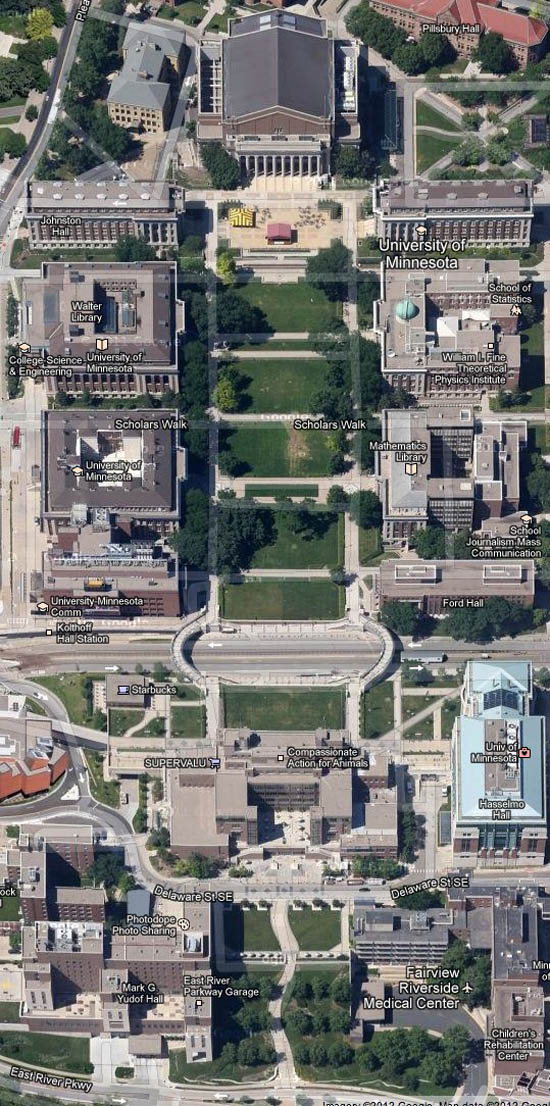Dave Brubeck picked the worst possible way to remind people he was still alive, adn we note his passing with sadness: a marvelous sound, a deft, bright spirit. The thinking man’s Vince Guaraldi! Whom I mention just because he’s the other piano-jazz-guy people seem to know. Also gone: Oscar Neimeyer. 104 years old. He designed Brasilia, among other things. He was a firm, committed Communist. The BBC has this classic line:
“His style was not to everyone's taste, and for a communist some people say his work was not very people-friendly.”
Imagine that. He also designed this structure, although Wililiam Harrison is often cited; he was the lead architect on the entire project.

As a critic noted with great astuteness, the building is quite clear about its intention: the bureaucracy is given prominence over the space where the “representatives” meet. Across the street:
That’s Tudor City, a 1920s apartment complex. You may ask: it was odd not to take advantage of the sweeping river views, no? Well, the UN site was originally a slaughterhouse, or some such rendering facility. Messy and smelly and unsightly. So the Tudor City buildings turned their back, unaware that in 50 years one of the most famous structures in the world, the UN, the Hope of Humanity, would be visible only from the bathroom window and the stairwells.
I actually like the UN Building; I like modernism, when there’s not too much of it, and it knows its place. The UN Building is a perfect example of doing it right: it commands the site, doesn’t insult its neighbors. Every big city has one of these, more or less; ours is the First Bank Building, which was recently renamed in favor of a new tenant - who promptly announced a 4,000 employee layoff.
The bank had previously occupied a big old filedrawer around the corner, which is being converted to apartments. Lots of that going on downtown. Several high-rise apartment towers going up, and I imagine the people moving in have the same image in their heads: I will stand in front of the window at sunset with a glass of wine and note the beauty of the city! I used to do that when I lived in a highrise; the view was pretty good, like a movie screen showing a big plotless documentary 24/7. I can see the appeal, at a certain stage in your life, but I try to imagine the time when I’d grow tired of sitting outside under trees with a garden nearby and the sound of running water, and I can’t quite nail down when that would seem old.
A piece on a local urban blog wondered when downtown Minneapolis was going to get a true urban park, noting that the space where the Nicollet Hotel stood would be a fine choice. Except A) we have one, albeit not centrally located, and B) the Nicollet Park location would be deserted after dark, since the entire area is haunted by failure and bad plans. It used to be quite dynamic:

Now:
Ever since urban renewal knocked down Bumtown, it’s been a ghostland, and fifty years later it’s just starting to get its spirit back. As usual, a Great Plan was responsible - an Olympian mind looking down on maps and buildings, and seeing clean lines and pure structures arranged with pure cerebral logic. You can say one thing about these schemes: they always look good from on high.
But things like that used to work. Take, for example, the pure classical perfection of the U of M’s great Mall.

(Google map, obviously.)
The old barn of Northrup Auditorium on the top, the matching buildings on either side, the blunt spare Coffman Union across Washington Avenue, serving as a match to Northrup and a terminus to the scheme. It’s absolutely majestic - but it doesn’t intimidate the individual. On the contrary: it’s scaled for the individual, and the architectural language of law and stability, which protect the individual. That’s the idea, anyway. The last two buildings built were post-classical, but use the styles of the time to express classical ideas, although whether they were shamed into it by the paymasters or felt obligated not to bust up the flow, I don’t know.
What I fear - and what has probably already happened - is that these things don’t mean anything other than COLLEGE, or perhaps GOVERNMENT, which are only part of the tradition behind them. I’ll grant that the ideas of Western Civ do not require these structures, or that columns and pediments do not a free society make. But at the very least they remind us that there was something here before us, and we did not make the world anew. On a clean slate we built something that connected the new with the old. Brasilia didn’t just repudiate the old. It had no interest in discussing that such a thing ever existed. The past always sounds like an annoyance when the clean-slate gang talk about it, but it’s really a rebuke. They can’t stand to be rebuked.
There was finally a new structure built on the area of the Mall, in the margins, overlooking the bend of the Mississippi.
Like most of Gehry's work, it's glass-shards in a Jiffy-Pop bag. It's not as if they had to go classical on the site - but almost anything streamlined Moderne from the 1939 World's Fair would have fit, and have adopted itself to the glories the site presented. As modern and spare as Moderne was, it still belonged to the previous tradition. It belonged.
But everyone wants a Gehry; everyone wants a Neimeyer. Just one! And if there's a piece of the past we have to sacrifice, well, there's plenty of that. Until there isn't.